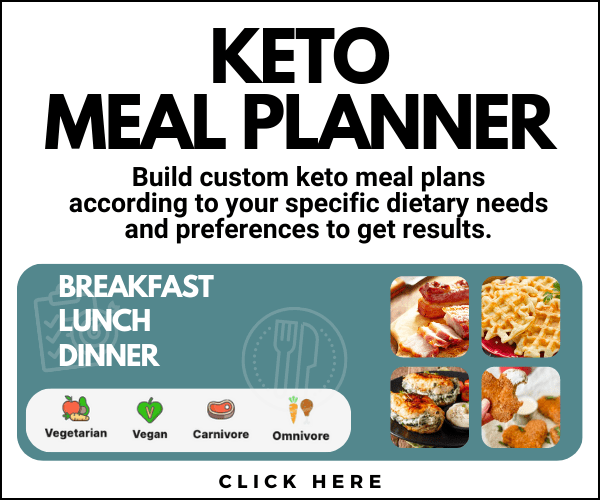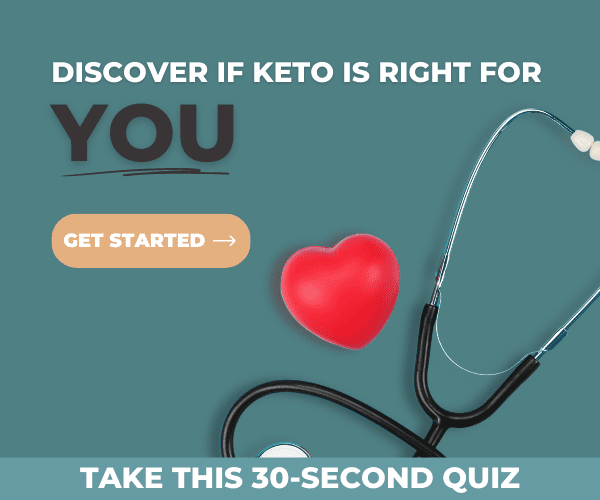
The most basic definition of keto is a diet that’s very low in carbs and high in fat. But, as it turns out, the “basic” keto diet can be adapted to suit different body types, activity levels, and goals. Different types of keto diet options exist, with varying recommended macronutrient percentages and objectives.
It goes without saying that there’s no one-size-fits-all keto diet! This is great news for anyone who’s interested in doing keto, whether to improve a health condition, lose body fat while building muscle, or boost their athletic performance.
Read on to find out which type of keto diet to follow for your goals and preferences.
Types of Keto Diet Plans
Note that all types of keto diet below have similar benefits, although they vary in the amounts of fat, protein, and carbs they recommend.
Standard Keto Diet
The standard ketogenic diet follows a macronutrient ratio of 60-70% fat, 20-30% protein, and 5-10% carbs. If you consume an average of 2,000 calories per day, your carbs would fall between 25-50 grams. [1]
Standard keto is highly popular as most people who start keto use this approach. It’s a great choice for weight loss and blood sugar management. Moreover, it’s the type of keto supported by the most research. Those with diabetes or pre-diabetes can use standard keto with guidance from their healthcare provider.
As for what to eat on standard keto — anything that’s low in carbs is allowed, such as eggs, butter, MCT oil, meats, fatty fish, shellfish, avocados, berries, and salad greens.
Cyclical Keto Diet
The cyclical keto diet, also called CKD or cyclical keto, uses the standard keto diet macros except that it allows for 1 to 2 days of higher carbs each week. For example, you might stick to keto from Monday to Friday, then do a carb refeed from Saturday to Sunday.
During your carb refeed days, carbs would comprise 60-70% of your daily calories while fats decrease to 5-10%.
Switching from very low-carb to high-carb gives the advantage of replenishing muscle glycogen stores, which is helpful for athletes and people who are passionate about exercising. Those extra carbs can fuel your performance at the gym.
The best way to do the CKD is to choose complex carbs over refined carbs during high-carb days. Complex carbs like beans, carrots, and sweet potatoes take longer to digest and therefore they do not raise your blood sugar quickly.
High-Protein Keto Diet
The high-protein keto diet is slightly different from the standard keto diet because it involves raising your protein to 35% of your calories. Carbs remain at 5-10%.
This type of keto is ideal for those whose goals include maintaining or building muscle mass (e.g., athletes and people who lift weights). The more active or older you are, the more protein you will need for muscle recovery, strength, and immune function. [2] [3]
Despite what some people believe, more protein doesn’t always knock you out of ketosis.

As a matter of fact, a lack of protein can lead to muscle wasting, weight gain (by increasing your appetite), and a higher risk of bone fractures. Most animal foods are excellent sources of protein while having little to no carbohydrates.
Targeted Keto Diet
The targeted keto diet or TKD for short is like the standard keto diet in which a person consumes their daily carbs around their workouts. As you may have already guessed, its biggest benefit is enhanced exercise performance.
Like the cyclical keto diet, the TKD works for athletes and fitness enthusiasts who perform exercises that deplete glycogen. These are moderate to high-intensity workouts, such as walking very briskly (4 miles per hour), bicycling fast (14-16 mph), heavy weight lifting, sprints, and burpees. [4]
Anytime you’re planning a workout, consume about a day’s worth fast-acting carbs at least 30 minutes before your session. Quick and energizing carbs with 15-20 grams per piece are crackers, a large potato, or a white hamburger bun. Keep in mind that the rest of the day’s meals and/or snacks should contain very few carbs in order not to put your over your carb count for the day.
Keto 2.0
Keto 2.0 is a variation of the standard keto diet with a special focus on plant-based foods, fatty fish, and lean protein sources like chicken breast and shellfish. Since it’s more geared toward plant-based eating, carbs comprise 20% of your macros instead of the usual 5-10%.
That said, it’s possible to get kicked out of ketosis on this plan unless you’re physically active. Remember that the more active you are, the higher the number of carbs your body can tolerate and still maintain ketosis.
Regardless, your carbs should still be low-glycemic and keto-friendly, such as salad greens, cauliflower, broccoli, cabbage, almonds, and berries.
The keto 2.0 diet is best for those who have come from a Standard American Diet high in processed carbs and sugar. It allows for a smoother transition to the Standard Keto Diet since you’re not drastically reducing carbs to 50 grams.
Moreover, since Keto 2.0 includes lots of fatty fish like salmon and mackerel, you’ll have a higher intake of omega-3 fatty acids. Omega-3 fats boost heart health by lowering triglycerides and blood pressure. [5]
Choose the Best Keto Diet Plan for You
The above versions of the ketogenic diet are great for any individual who’s looking to lose weight and improve their metabolic health, although some are more suitable for active lifestyles than sedentary ones.
You may have also heard of other keto diets, such as the Mediterranean keto diet, pescatarian keto diet, vegetarian keto diet, and carnivore keto diet. Each of these approaches focuses on the foods you should eat and avoid rather than on macros and meal timing.
Feel free to start with any of the keto diets above and notice how you feel! If you’re considering keto to reverse or manage a medical condition (e.g., diabetes, high blood pressure, epilepsy, cancer) always consult with your healthcare provider.
References
Shilpa, J., & Mohan, V. (2018). Ketogenic diets: Boon or bane?. The Indian journal of medical research, 148(3), 251–253. https://doi.org/10.4103/ijmr.IJMR_1666_18
Campbell, B., Kreider, R.B., Ziegenfuss, T. et al. International Society of Sports Nutrition position stand: protein and exercise. J Int Soc Sports Nutr 4, 8 (2007). https://doi.org/10.1186/1550-2783-4-8
Chernoff R. (2004). Protein and older adults. Journal of the American College of Nutrition, 23(6 Suppl), 627S–630S. https://doi.org/10.1080/07315724.2004.10719434
Examples of moderate and vigorous physical activity. Obesity Prevention Source. (2017, May 8). Retrieved April 11, 2023, from https://www.hsph.harvard.edu/obesity-prevention-source/moderate-and-vigorous-physical-activity/
Schwalfenberg G. (2006). Omega-3 fatty acids: their beneficial role in cardiovascular health. Canadian family physician Medecin de famille canadien, 52(6), 734–740.









